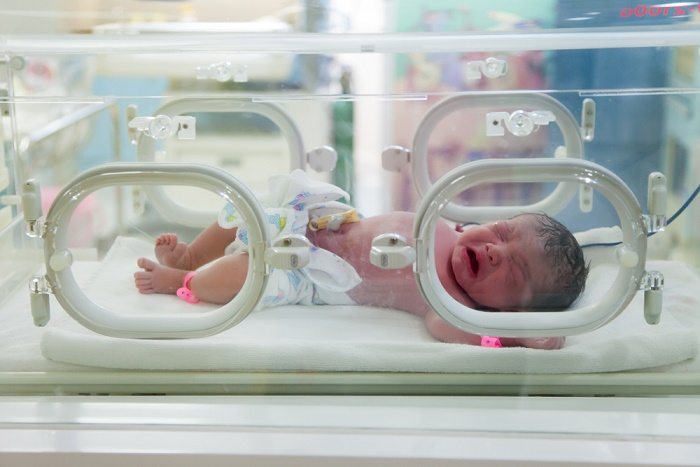Cases of Babies Born With Syphilis on the Rise
More infants are being born with syphilis in the United States due to rising rates of infection among women, as well as gaps in prenatal care.

Data released by the Centers for Disease Control and Prevention (CDC) this month revealed a marked increase in the number of babies born with syphilis. The rate of congenital syphilis, which occurs when a pregnant woman passes the bacteria to her infant, increased in the United States by 38 percent between 2012 and 2014.
This reflects an increase in the number of women infected with primary and secondary (P&S) syphilis as well as gaps in the prenatal care women receive.
Though much of the nationwide increase in P&S syphilis was seen in men who have sex with men, there has been an increasing number of P&S syphilis cases in women as well. In fact, the number of P&S syphilis cases in women jumped 22 percent between 2012 and 2014 alone.
This increase is likely the cause of the spike in the number of babies born with the disease. Congenital syphilis can cause miscarriage, stillbirth, severe illness in the infant, and even early infant death. There were 438 nationwide cases of congenital syphilis in 2014, which led to 25 stillbirths and eight deaths within 30 days of birth.
Researchers point out that these outcomes were entirely preventable. If a pregnant woman is treated with penicillin at least 30 days before giving birth, there is a 98 percent cure rate, meaning her infant would not be born infected.
The data shows that 21.8 percent of the women who gave birth to a baby with congenital syphilis in 2014 received no prenatal care. Among those women who did receive at least some prenatal care, 43 percent were never treated for the disease. According to the CDC’s study, among those mothers who received no treatment, 15 percent were never tested for syphilis during pregnancy.
The CDC recommends that all pregnant women be tested for syphilis as a routine part of the first prenatal visit. Women who are at increased risk or live in a community with high rates of syphilis should be tested again during the third trimester.
Syphilis is a bacterial infection that is primarily spread through sexual contact. When transmitted sexually, the initial (or primary) stage of the infection usually causes small, round, painless sores on the genital, anus, lips, or inside of the mouth. If not treated, the infection can advance to the secondary stage, which often causes a full body rash and can cause many other symptoms such as fever, swollen lymph glands, sore throat, patchy hair loss, headaches, weight loss, muscle aches, and fatigue.
If the infection is still not detected and treated, syphilis can become latent and begin to damage the brain, nerves, eyes, heart, blood vessels, liver, bones, and joints. A person may have no visible symptoms during the latent stage, which can last as long as 20 years.
Syphilis is one of the oldest STIs and can be cured with penicillin. At the end of the 1990s, the rates of the disease in the United States were so low (6,657 cases of P&S syphilis in 1999) that public health experts believed they could eliminate the disease entirely. Since that time there has been a rise in syphilis cases. There were 16,663 nationwide cases of P&S syphilis in 2013.
“Congenital syphilis is a needless tragedy, and we need to be doing a better job of protecting newborn babies from this dangerous infection,” said Virginia Bowen, an epidemiologist at the CDC who served as lead researcher for this report, told HealthDay. “The fact that these women slipped through the cracks and their babies were born with syphilis tells us that something went wrong.”

